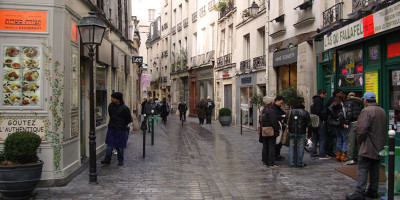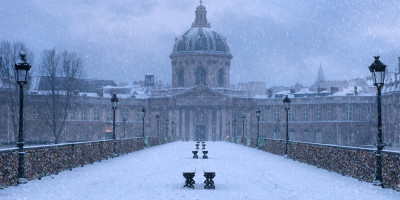
Photo by Urek Meniashvili from Wikimedia
Top 10 Interesting Facts about the National Museum of History of Azerbaijan
Located in Baku, The National Museum of History of Azerbaijan is the largest museum in Azerbaijan. it is housed in the former mansion of Azerbaijani oil magnate and philanthropist Haji Zeynalabdin Taghiyev.
The museum building consists of four floors and was designed by Polish architect Josef Goslawski. Its construction started in 1893 and was completed in 1902.
It contains more than 250,000 exhibits, which are divided into 11 Funds. Archaeological, patriotic, ethnographic, special, auxiliary historical, gifts and memorabilia, weapon and banners, numismatics, documentary sources, photo-negative and descriptive.
1. The Museum Collection of Archaeological Fund
The museum collection of the archaeological fund has about 22,000 exhibits that are mainly stone and obsidian instruments of labor of the epochs of the Paleolith, Mesolite, and late Stone Age.
One of the main positions among them belongs to the fragment of a fossil man’s lower jaw found in the Azikh cave not far from the city of Fuzuli – the man called nowadays “azikhantrop” that is estimated to have lived 300-350 thousand years ago.
The archaeological samples were placed in the Fund and Electronic Database was formed based on necessary information about them. Electronic certification of the Fund’s materials has been started in 2008.
This is being implemented in the special certification program created on the local network of the Museum. 25% of the Fund’s materials have already been certificated electronically.
2. The Museum Building is a Former Residence of Haji Zeynalabdin Taghiyev

Photo by Urmen19 from Wikimedia
Before the building was transformed into a museum in 1920, it was a private residence of an Azerbaijani national industrial magnate and philanthropist, Haji Zeynalabdin.
The house was confiscated when the Russian army invaded and occupied Baku in 1920. Under a resolution of the USSR People’s Commissariat, the residence was established as a museum; only two months after the Bolsheviks took Baku.
It was established together with other historical and regional museums and inspired the teachings and promotion of history in Azerbaijani. In May 1934, a special order was adopted to improve the teaching of history and geography in schools.
3. The museum exhibits more than 150,000 coins
The numismatic fund of the museum has more than 150,000 coins belonging to different historical periods.
These collections consist of ancient and oriental coins, ancient Greek cities, Roman and Byzantine Empires, Hellenistic states, Arab Caliphate, Ottomans, Baburis, and others. The Coins were minted in other countries but were found in the territory of Azerbaijan. There are also coins representing almost all countries of the world.
Here, coins of various periods are preserved – coins of Alexander the Great, those of some Hellenistic countries (Selevkia, Parthia, Bactria, Ponta, etc.); coins of great antique centers – Athens, Rome; coins of the period of the Arabic caliphate, period of feudal countries, as well as coins of Shirvanshahs.
In ancient Azerbaijan (in Atropatena and Caucasian Albania) silver coins were already minted for the first time in III century B.C. During the period of the early Middle Ages, the cities of Nakhchivan, Baku, Barda, and some others start to coin their own money.
Moreover, the fund also has a good collection of medals, various signs, banknotes, seals, and postage stamps.
4. Its ethnographic fund has 900 Exhibits

Photo by Nüşabə M.Ə. from Wikimedia
The ethnographic fund has in its collection about 9000 exhibits. The most ancient exhibits are a chandelier of the 12th century, a pestle, and a brazier. The exhibits such as copper vessels, silk fabric, and woodworking samples relating to the XV-XVIII centuries and differing in their shapes and contents attract particular attention.
The unique miniature embroidered on the silk fabric of the 17th century has caused great interest from specialists as well as visitors. Most of these materials are used to illuminate the history of the Safavids in the exposition.
The majority of the exhibits being preserved in the Fund and reflecting all areas of the household culture of Azerbaijani people pertain to the beginning of the XIX-XX centuries.
There are also preserved household belongings of ethnic minorities and different nations in the Fund. Carpets and carpet products gifted to the Government, various organizations, and the Museum in different periods are kept in the Ethnographic Fund.
5. Weapons are Part of the Museum Exhibits
The arms collection, the main part of which is the oriental type of arms, has over six hundred exhibits of various epochs and peoples. The central position in this collection belongs to cold steel and firearms of the Caucasus, which is, according to the quality and quantity of the exhibits, one of the biggest collections of Caucasian arms.
These weapons show the highest level of weapon production and the high professionalism of Azerbaijani gunsmiths. The materials of the Fund are regularly exhibited in the exposition of the Museum and various exhibitions, and in the exhibitions involving only the collection of the Fund’
The exhibits are obvious examples of our Azerbaijan national values, material culture, and historical heritage.
6. National Museum of History Restoration Laboratory

Photo by Urmen19 from Wikimedia
The restoration of Museum exhibits had been carried out since the establishment of the Museum of History of Azerbaijan. In the first place, archaeological findings were primarily being restored and conserved.
However, as the Museum’s collection was enriched with various exhibits, there was a necessity to involve restorer-specialists who majored in different fields. Most of the employees of the laboratory have many years of restoration experience and education.
The laboratory workers are specialized in different fields like metal, ceramics, wood, textile painting, and graphics.
7. The Fund of Documentary Sources
The Fund of Documentary Sources was established in 1996 based on the scientific archive of the National Museum of History of Azerbaijan. it preserved various materials covering a long period from the beginning of the XIX century up to the present.
They include documents and photographs reflecting the development of Azerbaijani culture and education, science, and literature. Among these documentary sources, there are many materials reflecting the meaningful life and activity of the famous public figure.
Faces of these influential figures like philanthropists Haji Zeynal Abdin Tagiyev, Mirza Fatali Akhundzadeh, Hasan bey Zardabi, Najaf bey Vazirov, Rashid bey Efendiyev, Teymur bey Bayramalibeyov are exhibited in the museum.
8. Fund of Gifts and Memorabilia

Photo by Interface from Wikimedia
There are currently 5665 exhibits in the Fund of Gifts and Memorabilia. Nearly 1000 pieces of them are gifts presented to Azerbaijan directly to the National Museum of History of Azerbaijan.
The gifts given by President of Russia Vladimir Putin, President of Turkey Turgut Ozal, King of Afghanistan Mohammed Zahir Shah, President of Indonesia Sukarno, President of Egypt Gamal Abdel Nasser, President of Turkmenistan Gurbanguly Malikgulievich Berdimuhamedow hold a special place among the Fund’s exhibits.
The Fund works on the description of exhibits, the preparation of thematic cards and scientific passports for relatively interesting and unique exhibits, the electronic certification of exhibits, compilation of catalogs as well as assisting creative organizations and individuals.
9. Fund of “Descriptive Materials” Preserves Historical Documents
The Fund of “Illustration and Fine Arts”, which was established in 2002 on the basis of paintings from other funds and departments, has been operating under the name of the Fund of “Descriptive Materials” since 2009.
More than 1000 paintings of artists from European, Eastern countries, and Russia are preserved in the Fund. Among them, there are artworks trimmed with oil and watercolor on linen, wood, cardboard, and paper including those made by the methods of graphics, lithography, intarsia, encrustation, and mosaic.
At present, the Fund of “Descriptive Materials” operating in the Museum contains those works as well as artistic paintings, statues, and other artworks mainly concerning the history and obtained by the ways of collecting and ordering. Those works are displayed in the Museum’s permanent exposition and the exhibitions organized by the Museum.
10. Fund of Patriotic War Preserves Patriotic wars Loot
The Fund of Patriotic War was established in January 2021. Its main purpose is collecting, preserving, researching, and propagating clothes, memorabilia, documents, and photographs belonging to our compatriots who were martyred and became veterans for the territorial integrity of Azerbaijan.
Currently, it has more than a hundred inventories being received for new materials. Belongings and photographs of National Heroes of Azerbaijan- Major-General Polad Hashimov, Colonel Ilgar Mirzayev, Colonel Shukur Hamidov, and Chingiz Gurbanov- are preserved in the Fund.
There are also items taken as the military loot from Armenian soldiers during the liberation of our lands by the Azerbaijani Army are among the materials preserved in the Fund of Patriotic War. The Head of the Fund is Shafa Movsumov.

 English
English










